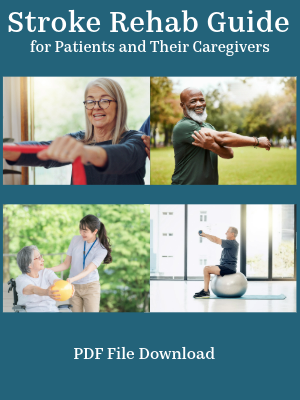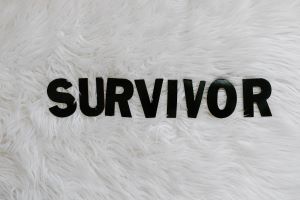Unilateral Neglect
Unilateral neglect presents as lack of awareness of one side of the body or lack of response to stimuli on one side. Left side neglect is more frequently seen than right side neglect. The stroke patient may act oblivious to one side. Some examples of neglect include eating food on only one side of the plate, inability to see objects off to one side, grooming or dressing only one side of the body (i.e. only putting one arm through a sleeve), being unaware of the affected limbs, and reading only one side of text on a page. When asked to draw an object, a stroke victim with unilateral neglect may only draw half of the object. These are only a few examples, and symptoms of neglect will differ from person to person.
Techniques to Improve Unilateral Neglect
1. Approach the stroke patient from the affected side, causing them to attend more to that side. If they do not look at you, gently turn their head toward you. Sit on the affected side when interacting with the stroke patient.
2. Put objects on the affected side to make the patient search for them. This applies to items like the tv remote, a glass of water, the phone, etc. This does not apply to the nurses' call light though. Patients need to be able to call for help. If the neglect is severe, this approach may need to be reserved for when a caregiver is present, so the caregiver can cue the patient to turn their head and find the item of interest as you would not want to deprive the patient of a drink or ability to call a loved one.
3. Touch the affected side or bring the patient's non-affected hand over to touch their affected side. This is to help make them aware of that side via touch. You can also use tactile sensation with a massager or a body brush with soft bristles.
4. Incorporate the affected limb into activities. An example would be the caregiver guiding the affected arm through an activity such as stroking the family pet, reaching for an object, or wiping off a table. Another example would be to have the patient use their non-affected limb with the affected limb such as holding a ball between the two hands or clasping both hands together and moving the arms together.
Get Our Stroke Rehab Guide

Our stroke rehab guide is designed specifically for patients and caregivers. It's in pdf format and can be immediately downloaded. It includes about
- Stroke Definition & Causes
- Stroke Treatment
- Rehabilitation Information for Physical, Occupational and Speech Therapy
- Exercise pictures
- Q&A from patients and caregivers
- Adaptive Equipment & Techniques
- How to Prevent Another Stroke & More!
Medical Disclaimer: All information on this website is for informational purposes only. This website does not provide medical advice or treatment. Always seek the advice of your physician or other healthcare provider before undertaking a new healthcare or exercise regimen. Never disregard professional medical advice or delay seeking medical treatment because of something you have read on this website. See the disclaimer page for full information.
- Home
- Unilateral Neglect
















